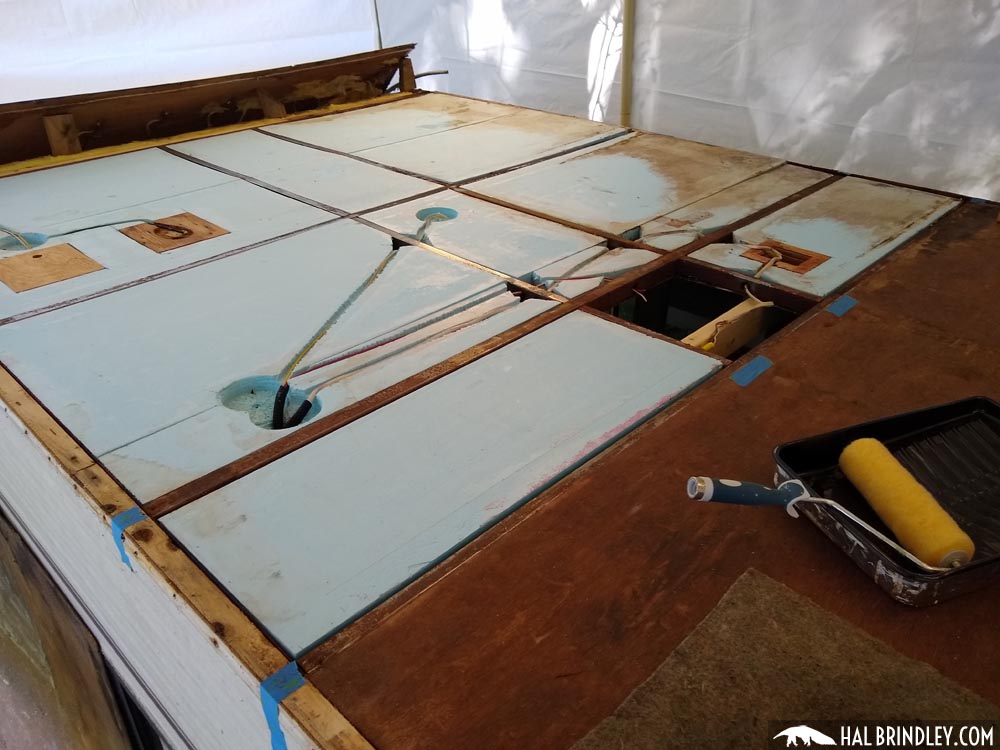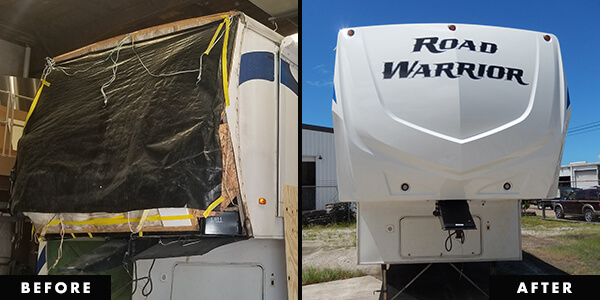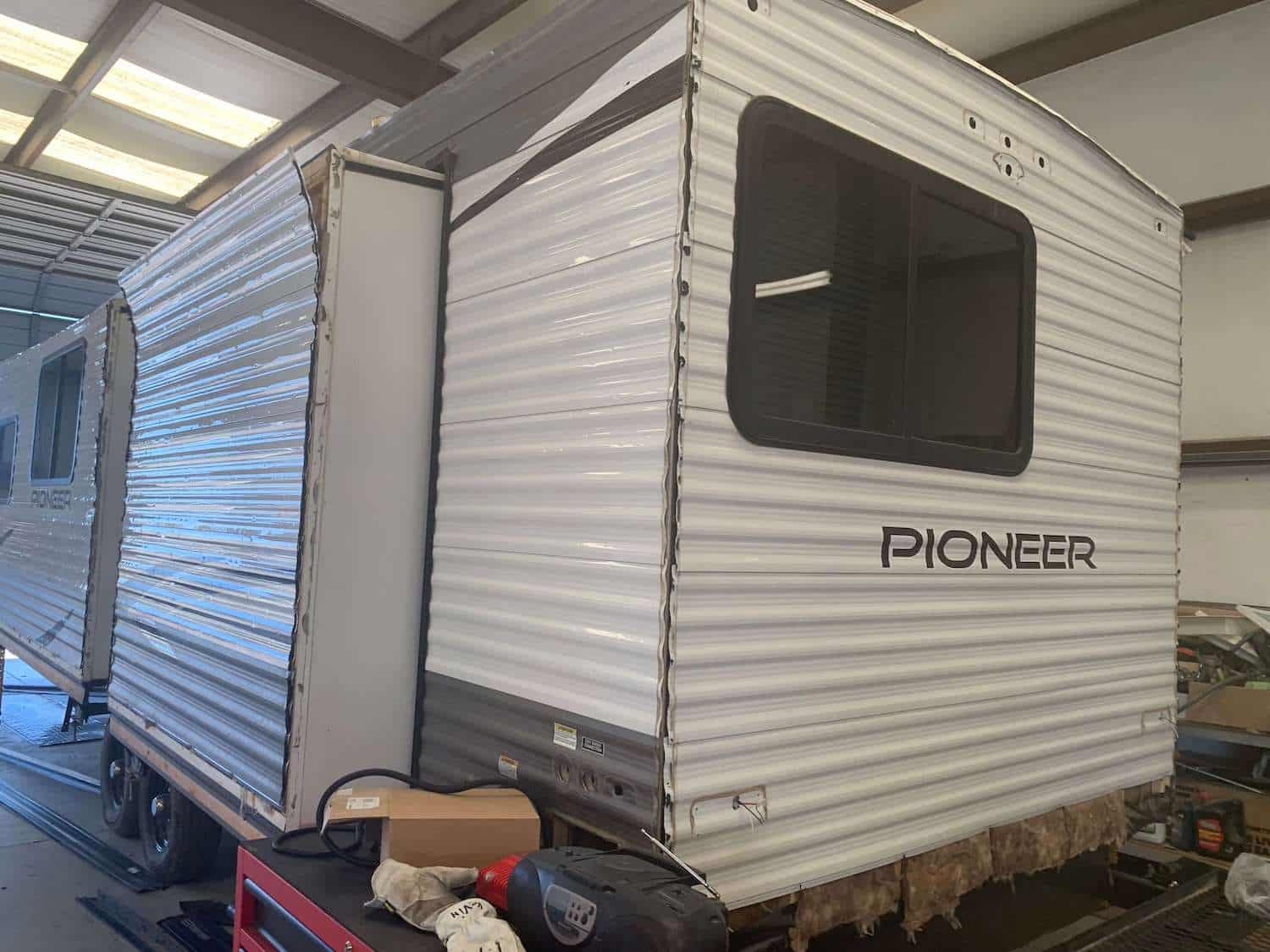All Categories
Featured
Table of Contents
- – Camper Repair Shop Near Me Placentia, CA
- – OCRV Center
- – Pop Up Camper Roof Repair Placentia, CA
- – Pop Up Camper Repair Near Me Placentia, CA
- – Camper Service And Repair Placentia, CA
- – Pop Up Camper Canvas Repair Placentia, CA
- – Camper Repair Shop Near Me Placentia, CA
- – Camper Service Placentia, CA
- – Camper Roof Repair Near Me Placentia, CA
- – Camping Repair Near Me Placentia, CA
- – Camper Repair Shop Near Me Placentia, CA
- – Rv Camper Ac Repair Placentia, CA
- – Pop Up Camper Roof Repair Placentia, CA
- – OCRV Center
Camper Repair Shop Near Me Placentia, CA
It's truly nice to see that this framing below is still very strong. To make it a little bit less complicated to obtain to this and additionally just to get rid of this piece, I'm gon na cut this panel back a little bit extra.
I'm gon na cut down a little bit, and a little and a little bit, primarily, I'm looking for the component where this obtains strong once more just like when I did the flooring, it was the very same idea of, exactly how far back do we need to take it to get to good stuff? So I'm gon na tinker that.
That additional cut, bringing this back, obtained me to where I found wood that's solid, so that's amazing. There's not a whole lot of complicated stuff going on below - Camper Trailer Repair Near Me Placentia.
So the bottom line out of this is anything that looks hinky is about to come out of right here and after that come back and rebuild this with new framing things that'll allow this edge go back with each other sturdily. Now, when you do this, if you make use of a multi-toll, whatever you make use of to make these cuts you wan na be truly mindful.
Pop Up Camper Roof Repair Placentia, CA
So you're simply gon na have to be extremely, really mindful as you go with to see to it you don't undergo. Go with the material, not experience the panel on the camper. I prepare to reduce this one and what I have actually done is made use of a square to mark that line.
That functioned out truly well and got that flush cut. It's all set to receive a new cross participant in there and I'm gon na repeat that process and just, like I stated, obtain all the old junk out of below. The restore on the corner right here is going really well and second best concerning the lumber here.
Pop Up Camper Repair Near Me Placentia, CA
You might additionally simply buy 2 by two. And, as I placed everything together, as I've pointed out previously, among things I'm doing due to the fact that I can't get to the outdoors to bring screws from the outside in throughout grain of this item, or below, I could not get in by doing this, so instead it's the edge irons that are making this job to make sure that I can link everything together.
This chunk of 2 by six lives right here and what it truly does, gets on the outside, this is the reduced end of the brace that holds up the front awning. This piece's objective in life is to live right below and obtain the screws on that support.
Screws I'm using are simply typical inch and 5/8 timber screws and driving those with the charge motorist. The influence wrench, impact driver, makes an actually large offer on that and it makes stuff go a great deal quicker. So, from right here on out, it's rinse and repeat, any other place that are blocks like this, put those in.
Camper Service And Repair Placentia, CA
With the repairs done on the within we're practically to a point where we can get new trim outside of the camper, but, prior to we can put brand-new stuff on we got ta obtain old things off. There is a whole lot of residue below that's leftover from the trim that was on there.
Getting old caulk off, particularly RV caulk, is not easy to do, but, I've got a method for this utilizing a multi-tool that makes this rather simple, pretty simple. First off, let's have a look at the multi-tool and what we need, that pointer, not a cutter, yet what kind of pointer we need in that multi-tool to function on this.
And I have found that a multi-tool is a really, truly good method to do this. You have actually seen me use the multi-tool in other places on the camper, cutting wood out, cutting nails. Currently, in this case, we don't wan na reduce with it we wan na push with it. This comes to be generally a putty knife on steroids.
Pop Up Camper Canvas Repair Placentia, CA
So think of, if you might get a putty blade, if you did get a putty knife up against that caulk and you were pushing against it, yet like a gazillion times a minute, that's what we're gon na perform with this. So, of what we're doing, we do not desire a saw blade on here.
What I'm gon na do is start by knocking the teeth off. I'm gon na make this slightly convex, and after that I'm gon na develop it just a little, it doesn't have to be a blade side, but just envision what the pointer of a putty knife looks like. That's all we want this to look like when we're done.

So now we can go after that caulk. Since we have the appropriate device for the job, we can begin pursuing this caulk and part of the key to this is when you come in with a multi-tool, this is more difficult than the light weight aluminum. So do not been available in at an actual high angle.
And it's simply gon na be an issue of locating the right angle, finding the ideal angle, and afterwards cutting, cutting, slicing, until you get all of that deposit off of there like this. Well, there you go, you understand, and for me, there's lots more of this to do, so fortunately, thank goodness it's as simple as it is with the multi-tool.
Camper Repair Shop Near Me Placentia, CA
Be careful of your substrate. Make certain that the device is not gon na harm the substratum when you're functioning on obtaining this caulk off below. I just got ta obtain back to it and got this whole corner to go. Our last action in tidying up caulk residue and various other junk here on the camper is to utilize a cord wheel and a drill.
Currently, once more, like I have actually pointed out before, prior to you do this, make certain that whatever location you're tidying up can withstand the rigors of a cord wheel being run over it. It works excellent on this aluminum skin. Would not be a fantastic choice for any sort of a membrane, however primarily we just wan na scrub here and it's gon na knock off this junk that didn't come off from the previous action, like this.
Camper Service Placentia, CA
Really what we wan na do below is make sure that if you're utilizing this keep it moving like that. Do not simply hover in one area 'cause we can get rubbing from this and we don't wan na shed the paint that's left on right here. I have actually obtained ta a piece of trim and it's prepared, but we're not actually installing the trim at this moment.

So what I'm gon na do is fasten this item on momentarily. I'm gon na form the corner and after that take it withdraw and we obtained ta get into a whole caulking step here. So, at this phase of the game, right here's what this is gon na look like. I'm gon na get this in position like that.
And this becomes part of the factor, component of the reason I'm doing this now is as a result of this messing up about, but when there's butyl tape on below and there's caulk on the molding and I don't wan na be doing this kind of playing around when that stuff gets on here.
Camper Roof Repair Near Me Placentia, CA
You wan na convince this item that it's gon na bend. It's made out of light weight aluminum. It's gon na make the bend, till this item right here begins to meet the face of the camper there, and, something like that.
I believe we have to do with prepared to go - Camper Trailer Repair Near Me Placentia. So again, what this does for me, is it's simply gon na make the following step a lot much easier to do and it's gon na, I'm not gon na be combating the trim and dealing with wet caulk and all that stuff when we reach the following step.
Camping Repair Near Me Placentia, CA
So in the world of preparation, up to this point, you saw me placed the bend in the trim. The various other point I performed in enhancement to the wire wheel and the putty blade, gadget thing, is I ran solvent, I ran denatured alcohol over the beyond the skin below simply to see to it any type of last little of residue was off of there.
It's a cheap insurance coverage plan to clean every little thing down with denatured alcohol. Currently, the putty tape is just what it appears like, it's tape constructed of putty, significantly like plumbing professionals putty, and the means we'll utilize this is to stick it to the camper. I have actually currently come down this much.

If you do, occasionally it stretches out, and I wan na make certain that I preserve the full body of this putty. I don't wan na take any opportunity of stretching it.
It's a great deal like if you have actually used double-face tape for anything it's similar in this regard. Now with our trim, it's got a broad flange in this instructions and a narrow flange in this instructions. That's good to understand since currently I'm gon na come down this wall surface, and I don't require much putty going in this manner since the trim, the flange, the overlay, is slim in that instructions.
Camper Repair Shop Near Me Placentia, CA
And that is to ensure that we can do this. So this is amazing since with this putty, it's satisfying the shape and now we're creating a corner here that's actually gon na seal up where these 2 skins satisfy on the outside of the camper. And the other point I must mention is that of things I did right here is I went through with 4-Penny galvanized box nails, and I nailed the skin right at the edge to the two-bys that were reconstructed into this edge to ensure that this stuff is already strong.
Or else, if I hadn't done that, when I was doing this work right currently, that aluminum would certainly be flopping around like insane. Repeat this process, functioning your way, all the method down to the bottom of the camper.
Rv Camper Ac Repair Placentia, CA
I took the time prior to I obtained this far to place caulk on the back face of this item. So as I seat this now it's entering into the putty and a bed of RV caulk that I currently installed there. Currently, at this stage of the game, I'm just gon na drive screws, however we're gon na discuss that in a little.
I'm gon na pierce a little predrill right there. Wan na make sure that they get driven far sufficient however not overdriven 'cause that will nullify the effect of that nice washing machine.
Pop Up Camper Roof Repair Placentia, CA
OCRV Center
Address: 23281 La Palma Ave Yorba Linda, CA 92887Phone: (714) 909-1444
Email: art@ocrvcenter.com
OCRV Center
When I drive this versus the trim or any other component on the camper for that matter, we want that neoprene to seat and it is very important to not underdrive it or overdrive it. And it's crucial that we get this going in to ensure that the head of this is gon na wind up alongside the face of what we're touching.
Camper Repair Shops Near Me Placentia, CACamper Roof Replacement Placentia, CA
Rv Camper Repair Placentia, CA
Camper Trailer Repair Near Me Placentia, CA
Camper Repair Placentia, CA
Camper Repair Near Me Placentia, CA
Camper Repair Near Me Placentia, CA
Camping Repair Near Me Placentia, CA
Pop Up Camper Repair Placentia, CA
Rv Camper Ac Repair Placentia, CA
Camper Service Near Me Placentia, CA
Camping Repair Near Me Placentia, CA
Rv Camper Repair Near Me Placentia, CA
Camper Repair Shop Placentia, CA
Camper Service Center Placentia, CA
Pop Up Camper Roof Repair Placentia, CA
Camper Service And Repair Placentia, CA
Camper Service Center Placentia, CA
Pop Up Camper Repair Placentia, CA
Camper Services Placentia, CA
Rv Camper Repair Placentia, CA
Camper Awning Repair Placentia, CA
Pop Up Camper Repair Near Me Placentia, CA
Camper Repair Places Near Me Placentia, CA
Camper Service Center Placentia, CA
Camper Repair Near Me Placentia, CA
Camper Awning Replacement Placentia, CA
Pop Up Camper Roof Replacement Placentia, CA
Pop Up Camper Repair Placentia, CA
Camper Roof Replacement Placentia, CA
Camper Repair And Service Placentia, CA
Camper Awning Replacement Placentia, CA
Camper Service Placentia, CA
Camper Repair And Service Placentia, CA
Camping Repair Near Me Placentia, CA
Pop Up Camper Canvas Repair Placentia, CA
Pop Up Camper Repair Placentia, CA
Camper Service And Repair Placentia, CA
Camper Roof Repair Placentia, CA
Camper Service Near Me Placentia, CA
Rv Camper Ac Repair Placentia, CA
Pop Up Camper Repair Near Me Placentia, CA
Camper Roof Repair Placentia, CA
Camper Air Conditioner Repair Near Me Placentia, CA
Camper Repair Placentia, CA
Camper Repair Placentia, CA
Camper Services Placentia, CA
Rv Camper Repair Placentia, CA
Camper Roof Repair Near Me Placentia, CA
Camper Trailer Repair Near Me Placentia, CA
Camper Repair Shops Near Me Placentia, CA
Camper Services Placentia, CA
Camper Air Conditioner Repair Near Me Placentia, CA
Camper Services Placentia, CA
Camping Repair Near Me Placentia, CA
Rv Camper Repair Placentia, CA
Pop Up Camper Repair Near Me Placentia, CA
Camper Service Near Me Placentia, CA
Camper Repair Near Me Placentia, CA
Rv Camper Repair Placentia, CA
Camper Repair Places Near Me Placentia, CA
Pop Up Camper Repair Placentia, CA
Rv Camper Repair Placentia, CA
Camper Roof Repair Near Me Placentia, CA
Camper Air Conditioner Repair Near Me Placentia, CA
Rv Camper Repair Placentia, CA
Camper Awning Replacement Placentia, CA
Pop Up Camper Roof Replacement Placentia, CA
Rv Camper Repair Placentia, CA
Camper Service Near Me Placentia, CA
Camper Repair Places Near Me Placentia, CA
Rv Camper Ac Repair Placentia, CA
Camper Trailer Repair Near Me Placentia, CA
Pop Up Camper Repair Near Me Placentia, CA
Camper Service Near Me Placentia, CA
Camper Service Placentia, CA
Rv Camper Repair Near Me Placentia, CA
Pop Up Camper Roof Replacement Placentia, CA
Finding A Local Seo Services Pricing Placentia, CA
Near My Location Seo Services Pricing Placentia, CA
OCRV Center
Table of Contents
- – Camper Repair Shop Near Me Placentia, CA
- – OCRV Center
- – Pop Up Camper Roof Repair Placentia, CA
- – Pop Up Camper Repair Near Me Placentia, CA
- – Camper Service And Repair Placentia, CA
- – Pop Up Camper Canvas Repair Placentia, CA
- – Camper Repair Shop Near Me Placentia, CA
- – Camper Service Placentia, CA
- – Camper Roof Repair Near Me Placentia, CA
- – Camping Repair Near Me Placentia, CA
- – Camper Repair Shop Near Me Placentia, CA
- – Rv Camper Ac Repair Placentia, CA
- – Pop Up Camper Roof Repair Placentia, CA
- – OCRV Center
Latest Posts
Swamp Cooler Motor Repair Monterey Park
Sunland Commercial Kitchen Ventilation
North Hills Restaurant Hood Cleaning Service
More
Latest Posts
Swamp Cooler Motor Repair Monterey Park
Sunland Commercial Kitchen Ventilation
North Hills Restaurant Hood Cleaning Service